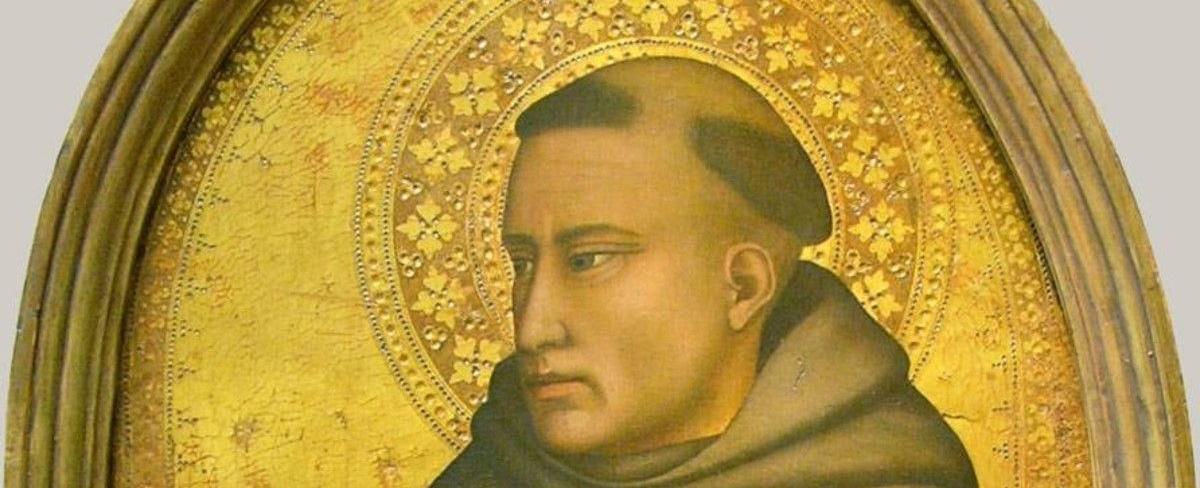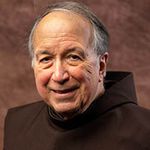Saint Anthony of Padua: Drawn to a Life with God

On June 13, countless people celebrate the memory of one of the most popular Franciscan saints, Anthony of Padua (1191/5–1231). The traditional date of Anthony’s birth was 1195, but recent scientific examination of his remains suggests he was several years older.
Despite his common association with an Italian city, Anthony was actually a native of Portugal. He was baptized Fernando Martins de Bulhões and came from a prominent family of knights in Lisbon, then on the frontiers between Christian and Muslim cultures. His wealthy family arranged for him to be educated at the cathedral school.
Drawn to a life with God, Fernando entered the canons regular of the Holy Cross at the age of 15 at their abbey of St. Vincent in Lisbon. However, distracted by frequent visits by family and friends, he asked to be transferred in 1212 to the motherhouse of the congregation, the abbey of Santa Cruz in Coimbra, where he received an excellent education in the Scriptures and theology.

The Abbey of the Canons Regular of the Holy Cross (Santa Cruz) in Coimbra, Portugal, where Anthony was a member of the community before joining the Franciscan friars.
While he was in Coimbra, then the chief royal residence, the first Friars Minor arrived in Portugal in 1217, settling in a small hermitage outside the town, where they quickly became popular among the people. Fernando, then guestmaster of the abbey, became familiar with the community. In 1220, the bodies of five zealous Franciscan preachers who had been martyred in Morocco were ransomed by King Afonso II of Portugal and brought to the abbey in Coimbra for burial. Fernando was so inspired by their witness that he asked to transfer to the new Order, taking the name Anthony after the patron of the friars’ hermitage there.

The Church of Santo António dos Olivais, Coimbra, Portugal, built on the site of the early hermitage of the Franciscan friars, where Anthony joined the Order.
Anthony originally hoped to likewise become a preacher among the Muslims – perhaps he felt his familiarity with the culture would better equip him for this task. However, soon after arriving in Morocco, Anthony became ill, and the ship returning him was driven off course, landing in Sicily. There he joined up with the local friars and went to the general chapter of 1221 in Assisi, where he met St. Francis.
Afterward, Anthony made his way to Northern Italy. He was originally stationed in a hermitage near Forlì, but his rich knowledge of Scripture quickly became apparent; within a few years, Anthony became a noted preacher throughout the region and also Southern France. He was given permission in 1224 by St. Francis to teach Scripture to the brothers in Bologna, and in 1227 he was appointed provincial minister of the friars in Northern Italy, where he made his base the city of Padua. In 1230 he played a prominent role at the general chapter of the Order, but asked to return to his preaching ministry.

St. Francis appearing to a chapter of friars in Arles, France, in 1224, while Anthony was preaching to the brothers. According to the legend, Anthony and one other friar were the only ones who saw Francis. (Giotto, upper basilica of San Francesco, Assisi)
Anthony’s preaching emphasized the connection between conversion to the Gospel and working for justice in society. For example, he persuaded the government of Padua to come to the aid of people in financial difficulty: instead of being imprisoned for debt, a person could instead declare bankruptcy and pick up their life again. In such ways, Anthony became beloved by the poor for drawing the attention of society to their plight.

Besides depicting Saint Anthony with the traditional medieval symbols of the Bible and the lily, El Greco placed an image of the Christ Child on the book to indicate that Anthony encountered the living person of Christ in his Word. As time went, on the book tended to disappear. Image: St. Anthony by the young El Greco (1580).
Anthony—called the “Ark of the Covenant” by Pope Gregory IX because of his profound knowledge of Scripture—died on June 13, 1231 and was canonized the very next year—one of the most rapid in history. People continued to seek Anthony’s assistance after his death. Fellow Franciscan Julian of Speyer, witnessing how so many were turning to Anthony as a powerful intercessor, composed a prayer in his honor in 1233:
If then you ask for miracles,
Death, error, all calamities,
The leprosy and demons fly,
And health succeeds infirmities.
The sea obeys and fetters break,
And lifeless limbs do you restore;
While treasures lost are found again,
When young and old your aid implore. . . .

The basilica of St Anthony in Padua, a famous place of pilgrimage in the Catholic world. Begun in 1232, the year after Anthony's death, it was completed in 1310, although enough work had been finished for it to be dedicated in 1263 while St Bonaventure was General Minister.
Anthony’s encouragement to us
Anthony reminds us: “The person who is filled with the Holy Spirit speaks in different languages. These languages are different ways of witnessing to Christ, such as humility, poverty, patience, and obedience; we speak in these languages when we reveal in ourselves these virtues to others. Actions speak louder than words; let your words teach and your actions speak. . . . It is useless for people to flaunt their knowledge of God’s law if they undermine its teaching by their actions.”
Declared a Doctor of the Church
St. Anthony was proclaimed a Doctor of the Church in 1946. Read a popular biography and reflection. Watch a short video biography.
Pray for us, blessed Anthony! Make us worthy of the promises of Christ.

Is this the real Saint Anthony? In 2014 a team of scientists and artists, working with the University of Padua Anthropology Museum, developed this image of Saint Anthony using the most recent technology, based on digital images of his skull. It confirms medieval records that state Anthony was a robust man, not the slender, delicate figure so often depicted in art. For more details, see the story.
Main image: St. Anthony (detail) by Maso di Banco, c. 1340–1350 (Metropolitan Museum of Art, New York).
Dominic Monti, OFM
Professor of Franciscan Research in the Franciscan Institute of St. Bonaventure University
Dominic V. Monti, OFM, is a Franciscan Friar of Holy Name Province (USA) and currently professor of Franciscan Research in the Franciscan Institute of St. Bonaventure University. He devoted the greater part of his ministry to teaching the History of Christianity, in particular the history of the Franciscan movement. He has contributed two volumes to the Works of St. Bonaventure series and is author of Francis & His Brothers, a popular history of the Friars Minor.

